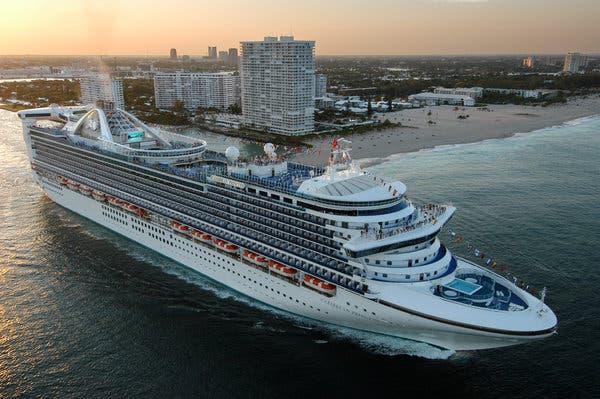
The US Centers for Disease Control and Prevention (CDC) issued a Framework for Conditional Sailing Order that introduces a phased approach for the safe and responsible resumption of passenger cruises.
This follows a No Sail Order for cruise ships originally issued by CDC earlier in March this year in an effort to minimise the spread of COVID-19 on cruise ships.
CDC wanted to extend the No Sail Order until February, however, the Trump administration blocked this move, the New York Times reported a month ago.
The new order establishes a framework of actionable items for the cruise line industry to follow so they can resume passenger operations with an emphasis on preventing the further spread of COVID-19 on cruise ships and from cruise ships into communities, and to protect public health and safety.
The order applies to passenger operations on cruise ships with the capacity to carry at least 250 passengers in waters subject to U.S. jurisdiction.
According to CDC, recent outbreaks on cruise ships overseas provide current evidence that cruise ship travel facilitates and amplifies transmission of COVID-19—even when ships sail at reduced passenger capacities—and would likely spread the disease into U.S. communities if passenger operations were to resume in the United States without public health oversight.
“This framework provides a pathway to resume safe and responsible sailing. It will mitigate the risk of COVID-19 outbreaks on ships and prevent passengers and crew from seeding outbreaks at ports and in the communities where they live,” Robert R. Redfield, CDC Director, said.
“CDC and the cruise industry have a shared goal to protect crew, passengers, and communities and will continue to work together to ensure that all necessary public health procedures are in place before cruise ships begin sailing with passengers.”
The order is said to require a phased approach to resuming passenger operations. A phased approach is necessary because of the continued spread of the COVID-19 pandemic worldwide, risk of resurgence in countries that have suppressed transmission, ongoing concerns related to restarting of cruising internationally, and need for additional time for the cruise industry to test the effectiveness of measures to control potential COVID-19 transmission on board cruise ships with passengers without burdening public health.
“CDC and the cruise industry have the same goal: A return to passenger sailing, but only when its safe. Under the CDC’s Framework for Conditional Sailing Order, cruise lines have been given a pathway to systematically demonstrate their ability to sail while keeping passengers, crew and their destination ports safe and healthy,” former Utah Gov. Mike Leavitt, co-chair of the Healthy Sail Panel, said.
During the initial phases, cruise ship operators are required to demonstrate adherence to testing, quarantine and isolation, and social distancing requirements to protect crew members while they build the laboratory capacity needed to test crew and future passengers.
Subsequent phases will include simulated (mock) voyages with volunteers playing the role of passengers to test cruise ship operators’ ability to mitigate COVID-19 risk, certification for ships that meet specific requirements, and return to passenger voyages in a manner that mitigates COVID-19 risk among passengers, crew members, and communities.
“Our member lines are … committed to helping to protect the health of our guests, our crew and the communities we serve, and are prepared to implement multiple layers of protocols informed by the latest scientific and medical knowledge,” Kelly Craighead, president and CEO of Cruise Lines International Association (CLIA), commented.
“We look forward to reviewing the new Order and are optimistic that it is an important step toward returning our ships to service from U.S. ports.”
Starting in Q1 2020, many cruise lines suspended sailings and extended vessel layups, a move that negatively affected the cruise sector’s earnings.
Carnival Corporation, the world’s largest cruise company with a fleet of more than 100 vessels, announced the sale of a total of eighteen older vessels, ten of which have already left the fleet. By selling ‘the less efficient’ ships, the company seeks future operating expense efficiencies and reduction in fuel consumption.
Copyright Ships & Ports Ltd. Permission to use quotations from this article is granted subject to appropriate credit given to www.shipsandports.com.ng as the source.